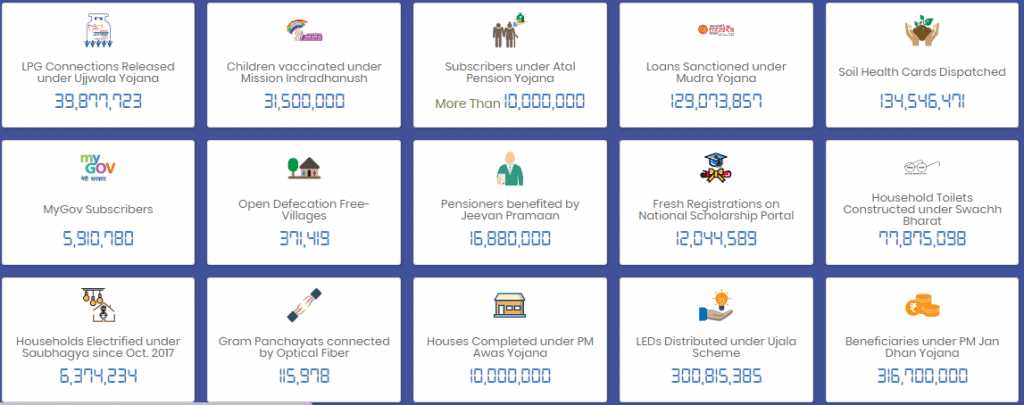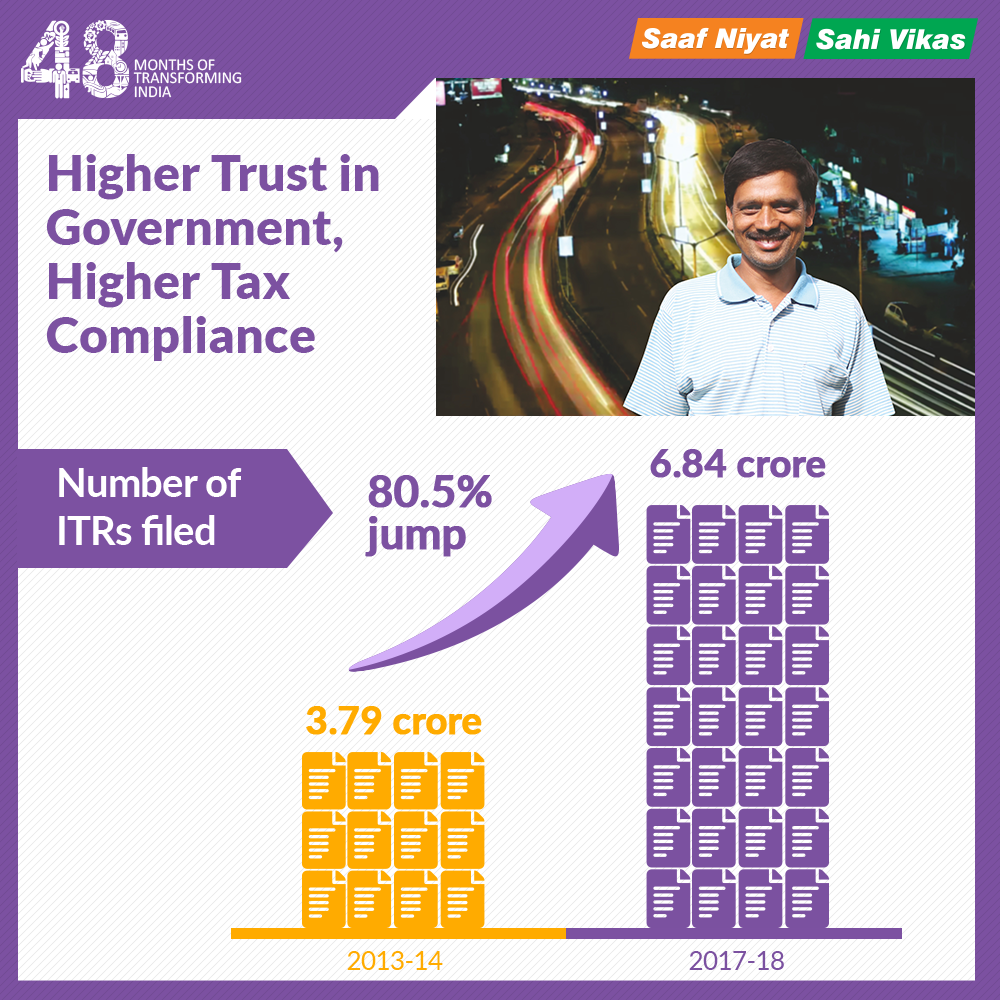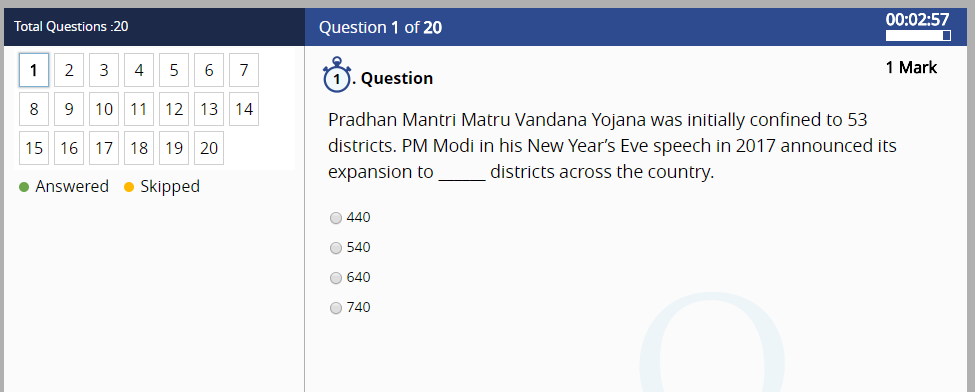There was a time when government websites meant the liberal use of the Times New Roman font, colourful blinking scrolls, and large messages which warned you said that the site was best viewed in Internet Explorer. But things sure seem have changed over the years, because the Modi government has created a website that wouldn’t look out of place for a startup pitching to Y Combinator.
Called 48 Months of transforming India, the website aims to showcase the Modi government’s achievements over the last four years. While the website talks at great length of about policy initiatives and laws passed, it does so in a way that seems more accessible than what babuspeak used to be in the past. So as the site loads, users are greeted with a “Performace Dashboard”, and a number of stats dynamically load around areas like the number of LPG connections the government has released under the Ujjwala Yojna, or the number of loans sanctioned under the Mudra Yojna. In hip, 21st century style, each data point is accompanied by its own little custom icon.

The site also has a bunch of infographics, which talk about the government’s various schemes. The infographics are both in English and Hindi, and feature snazzy graphs, lots of data, and some cool visual effects.

For people looking for more meat in the analysis, there’s detailed blogs by all Union Ministers, who talk about what their ministries have done over the years. And to check if visitors have absorbed this somewhat dense bit of information, there’s even a timed quiz, which lets use answer questions on the government’s policy initiatives.

The voting public will decide next year if the Modi government’s achievements merit it a second chance, but there’s little doubt that the government is putting its best foot forward to make its achievements known. Until not to long ago, political party manifestos were released in press conferences and then forgotten; the current government appears to be proactively giving the public enough data to judge its developmental agenda on, and is doing so in a way that’s both accessible and easy to understand.
And the use of technology to do so seems to be a part of a small but growing trend in government institutions. In 2016, the Andhra Pradesh government had created an very impressive online dashboard that was accessible to all, and let the public know about the details of government functioning in real time, including details such as the attendance of its employees and the number of functioning street lights in each district. Other government initiatives have been similarly progressive as well — the Indian government’s Swayam online education portal, which provides MOOC courses for free, isn’t all that different from Coursera. There’s still a long way to go, but there are signs that India’s government institutions are giving their dowdy websites a makeover, and using some cutting-edge technology to connect with their increasingly more internet-savvy citizens.